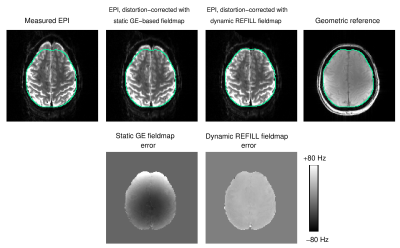Simon Daniel Robinson1,2,3, Beata Bachrata3,4, Korbinian Eckstein3, Saskia Bollmann1, Steffen Bollmann5, Siegfried Trattnig3, Christian Enzinger2, and Markus Barth5
1Centre for Advanced Imaging, University of Queensland, Brisbane, Australia, 2Department of Neurology, Medical University of Graz, Graz, Austria, 3Department of Biomedical Imaging and Image-guided Therapy, Medical University of Vienna, Vienna, Austria, 4Christian Doppler Laboratory for Clinical Molecular MR Imaging, Medical University of Vienna, Vienna, Austria, 5School of Electrical Engineering and Information Technology, University of Queensland, Brisbane, Australia
1Centre for Advanced Imaging, University of Queensland, Brisbane, Australia, 2Department of Neurology, Medical University of Graz, Graz, Austria, 3Department of Biomedical Imaging and Image-guided Therapy, Medical University of Vienna, Vienna, Austria, 4Christian Doppler Laboratory for Clinical Molecular MR Imaging, Medical University of Vienna, Vienna, Austria, 5School of Electrical Engineering and Information Technology, University of Queensland, Brisbane, Australia
An improved dynamic distortion correction - REFILL - which requires only a 4s pre-scan and a single reversed-readout-encoded EPI volume, provides fieldmaps which accurately reflect field changes due to motion and physiology encountered in fMRI.

Fig 5: The effect of shim change on the accuracy of a conventional (static) GE-based fieldmap and the dynamic EPI-based REFILL fieldmap. An imposed shim change, mimicking the effect of motion or physiology in fMRI, leads to additional distortion in frontal regions at 7T (top row, left). The change in field is not captured in the static fieldmap, leading to an incomplete correction (second column). The dynamic REFILL fieldmap for this volume is accurate, and gives a complete correction (third column) - see outline transferred from the distortion-free reference (top row, right).

Fig.2: Dependence of the readout gradient, φG, on field strength, sequence, receiver bandwidth and echo time. φG was
close to linear and quite consistent over phase-encode lines (left) and
slices (not shown). It was larger at 3T (red symbols) than 7T (black
symbols) and followed opposing trends with TE and bandwidth at the two
field strengths.